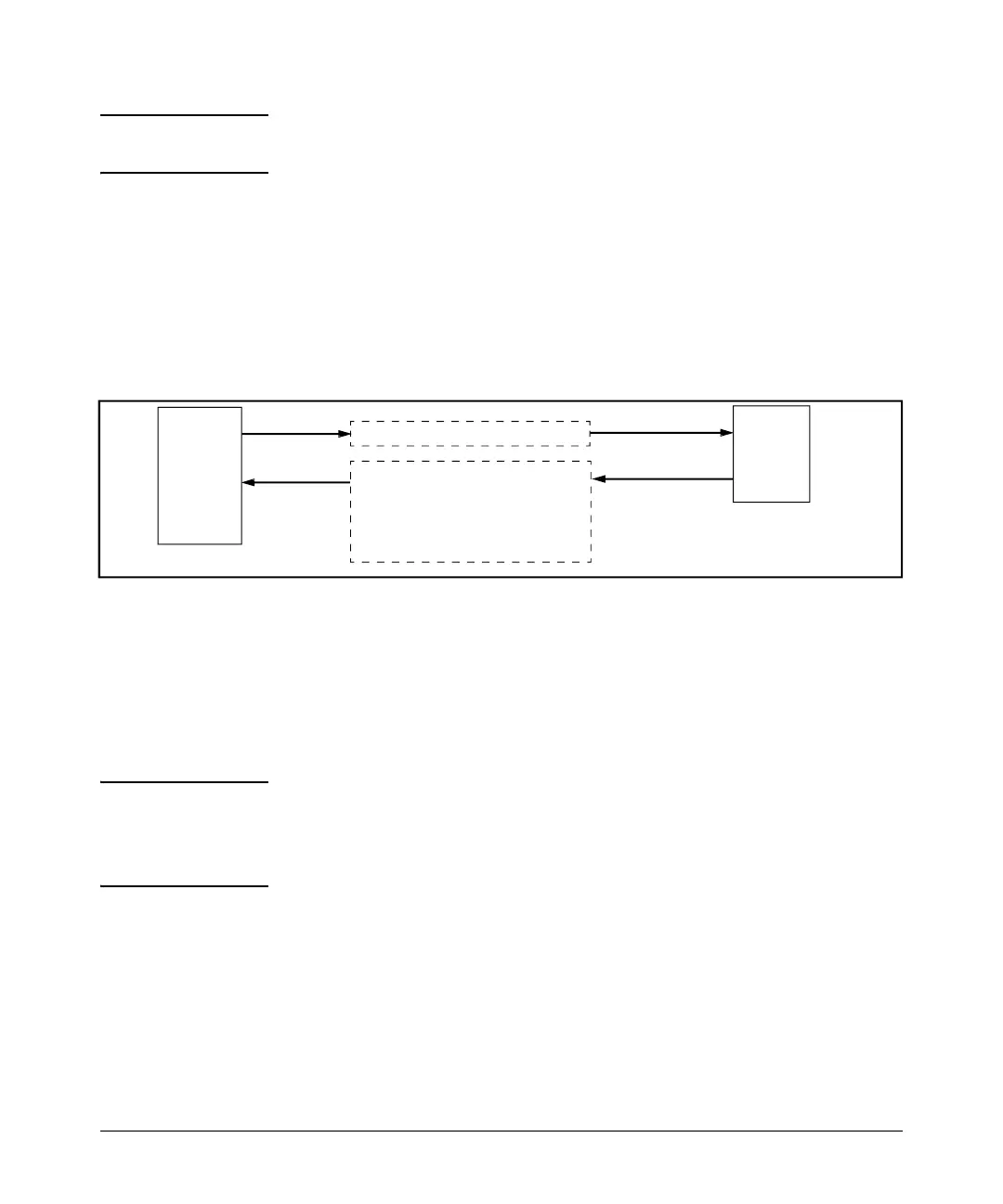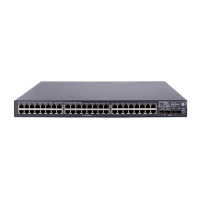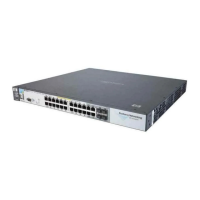Configuring Secure Shell (SSH)
Terminology
Note SSH in ProCurve switches is based on the OpenSSH software toolkit. For more
information on OpenSSH, visit
http://www.openssh.com
.
Switch SSH and User Password Authentication . This option is a subset
of the client public-key authentication show in figure
7-1. It occurs if the switch
has SSH enabled but does not have login access (login public-key) configured
to authenticate the client’s key. As in figure
7-1, the switch authenticates itself
to SSH clients. Users on SSH clients then authenticate themselves to the
switch (login and/or enable levels) by providing passwords stored locally on
the switch or on a TACACS+ or RADIUS server. However, the client does not
use a key to authenticate itself to the switch.
Switch
(SSH
Server)
SSH
Station
i
–
–
ProCurve
Client
Work-
1. Switch-to-Client SSH
2. User-to-Switch (log n password and
enable password authentication)
options:
Local
TACACS+
Figure 7-2. Switch/User Authentication
On the switches covered by this guide, SSH supports these data encryption
methods:
■ 3DES (168-bit)
■ DES (56-bit)
Note ProCurve switches use RSA keys for internally generated keys (v1/v2 shared
host key & v1 server key). The switch supports both RSA and DSA/DSS keys
for clients. All references to either a public or private key mean keys generated
using these algorithms, unless otherwise noted
Terminology
■ SSH Server: A ProCurve switch with SSH enabled.
■ Key Pair: A pair of keys generated by the switch or an SSH client
application. Each pair includes a public key, that can be read by
anyone and a private key held internally in the switch or by a client.
7-3

